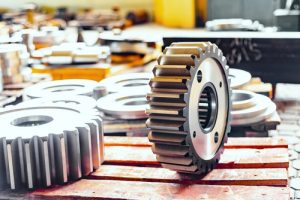 Maximizing Performance and Efficiency: The Role of Heat Treatment in Industrial Metal Manufacturing
Maximizing Performance and Efficiency: The Role of Heat Treatment in Industrial Metal Manufacturing
Heat treatment is an essential process in industrial metal manufacturing that involves the use of heat to alter the physical and mechanical properties of metallic materials. This process involves heating the material to a specific temperature and then cooling it at a controlled rate to achieve desired properties like toughness, hardness, and strength. Heat treatment is widely used in industrial settings to enhance the performance and efficiency of metal parts and products, making them more durable and capable of withstanding extreme conditions. In this blog post, we’ll explore the role of heat treatment in industrial metal manufacturing and how it can help maximize performance and efficiency in metal products.
Types of Heat Treatment Processes
There are several types of heat treatment processes used in industrial metal manufacturing, the most common of which are annealing, quenching, tempering, and normalizing. Each process is designed to produce specific properties in the material, depending on the intended use and application. Below is an overview of these heat treatment processes:
1. Annealing
Annealing is a process in which metal is heated to a high temperature and allowed to cool slowly. The purpose of annealing is to reduce the hardness of the metal, making it more ductile and malleable. The process relieves internal stress and strains within the metal, making it more workable and reducing the risk of cracking or distorting during subsequent manufacturing processes.
2. Quenching
Quenching is a process in which metal is heated to a high temperature and then rapidly cooled by immersion in a quenching medium, such as water or oil. This process produces high hardness, making the metal more wear-resistant and able to withstand impacts and shocks. Quenching can sometimes cause the metal to become brittle, and it must be tempered to reduce its brittleness.
3. Tempering
Tempering is a process in which quenched metal is heated to a temperature below its critical point and then cooled slowly. This process reduces the hardness of the metal and improves its toughness, allowing it to better withstand impact and fatigue. Tempering can also improve the metal’s ductility and reduce the risk of cracking or fracturing.
4. Normalizing
Normalizing is a process similar to annealing, in which metal is heated to a high temperature and then cooled in still air. The purpose of normalizing is to enhance the machinability of the metal, refine its grain structure, and improve its tensile strength and hardness.
Benefits of Heat Treatment in Industrial Metal Manufacturing
Heat treatment has numerous benefits for the performance and efficiency of metal products and parts. Below are some of the primary advantages it provides:
1. Improved Strength and Hardness
Heat treatment can significantly improve the strength and hardness of metallic materials, making them tougher, more wear-resistant, and better able to withstand impacts and fatigue. This property is especially useful in industrial applications where conditions are harsh and metal products are subjected to high stresses, loads, and temperatures.
2. Enhanced Ductility and Workability
Heat treatment can also increase the ductility and workability of metal materials, making them more pliable and easier to shape and form. The process can help alleviate internal stresses and strains within the metal, reducing the risk of cracking, splitting, or deformation during subsequent manufacturing processes.
3. Greater Consistency and Quality
Heat treatment can help improve the consistency and quality of metal products by refining their microstructure, enhancing their properties, and reducing defects and imperfections. The process can also help reduce inconsistencies in hardness, strength, and other mechanical properties, making it easier to manufacture high-quality metal parts and products.
4. Increased Efficiency and Reliability
Heat treatment can improve the efficiency and reliability of metal products by enhancing their wear resistance, durability, and overall performance. This property is especially useful in industrial applications where reliability and efficiency are critical to ensuring smooth and uninterrupted operations.
Conclusion
Heat treatment is an essential process in industrial metal manufacturing that can significantly improve the performance and efficiency of metal products and parts. It involves the use of heat to alter the physical and mechanical properties of metallic materials, making them more durable, wear-resistant, and able to withstand harsh conditions. The process has numerous benefits, including improved strength and hardness, enhanced ductility and workability, greater consistency and quality, and increased efficiency and reliability. By incorporating heat treatment into their manufacturing processes, industrial manufacturers can produce high-quality metal parts and products that meet the demands of their customers and exceed their expectations for performance and reliability.
Interested in learning more about heat treatment? Be sure to contact our heat treating professionals here at J.F. Heat Treating Inc. to learn more about what we can do for you!
